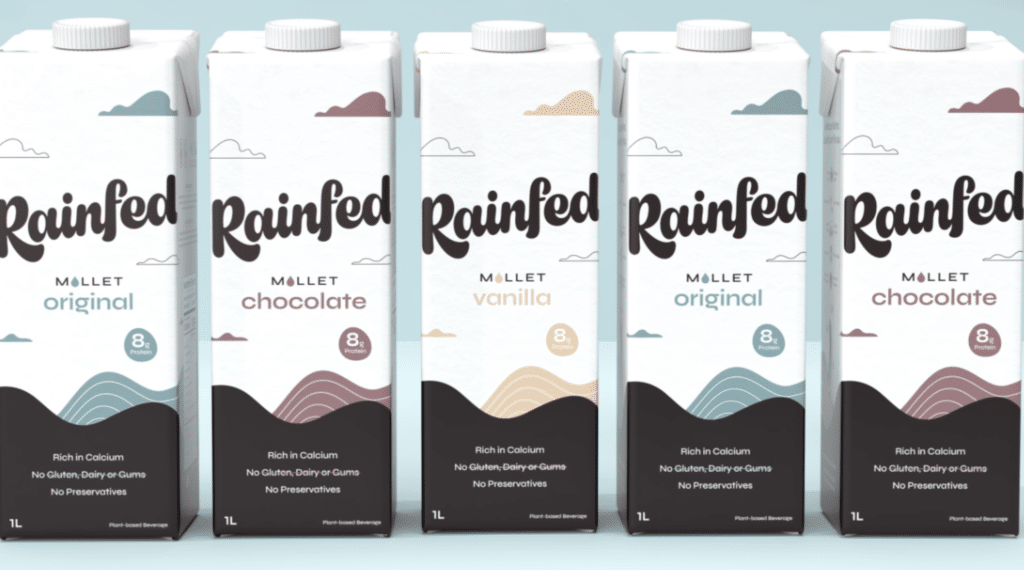
Webinar: Shoppable E-commerce: Increasing Sales From Digital Marketing
by Foodbevy The path to purchase for customers is blurring the digital and physical world more than ever. People are browsing the web on their phone while in the store,
Packaging design plays a pivotal role in how a product is perceived and ultimately, how it performs in the market. The first impression a consumer has of your product is largely influenced by its packaging – it’s what catches their eye in a busy store aisle or on an online marketplace, making it a crucial aspect of your brand’s initial communication.
However, effective packaging design goes beyond mere aesthetics. It’s an integral part of your brand’s story, serving as a physical representation of what your brand stands for. The design elements, from color schemes to typography, are not just visual cues but also convey key messages about your brand’s identity and values.
In this guide we’ll break down all the key elements that you’ll need to consider when creating CPG packaging designed to fly off the shelf.
This comprehensive guide to CPG packaging design is brought to you in partnership with Riser, a leader in the field of branding and design. Riser plays a pivotal role in helping brands navigate the complex world of packaging design, offering insights and expertise that enable companies to create packaging that not only looks great but also tells a compelling brand story.
Riser emphasizes the importance of a well-considered brand strategy as the foundation of effective packaging design. They view brand strategy as an outline for a brand’s story, clarifying the role of the brand in people’s lives and distinguishing it from the competition. This approach ensures that packaging design is not just visually appealing but also strategically aligned with the brand’s core values and objectives.
Their expertise extends to guiding brands in identifying their target audience, understanding their competitive landscape, and defining their brand strengths and character. These elements are crucial in developing packaging that resonates with consumers and stands out in the market.
In collaboration with Riser, brands can expect to develop packaging that is not just a container for their products, but a key element of their brand story and a crucial touchpoint in the customer journey.

A brand strategy clarifies your role in people’s lives and highlights what sets you apart from the competition. It acts as a ‘north star,’ ensuring that your content and narrative remain on track and relevant to your target audience. When it comes to packaging design, having a clear brand strategy is essential. It ensures that all elements of the design align with the brand’s overall vision and goals. This alignment is vital in creating a cohesive brand experience for the consumer. A brand strategy also helps your creative partners, like agencies, understand your vision, thereby ensuring that all aspects of the design work together harmoniously.
The hierarchy of communication is vital in quickly communicating your message to consumers. This hierarchy dictates how information is presented on the package, ensuring that the most important elements catch the consumer’s eye first. Here’s a breakdown of the key components:
The importance of the brand name versus the product descriptor in packaging depends largely on the maturity of the product category. In established categories where the brand has significant recognition, the brand name should be more prominent, leveraging brand loyalty and recognition. Conversely, in newer or less established categories, the product descriptor may need to be more prominent to educate consumers about the product and its benefits.

Developing a distinctive visual design language for packaging is essential in establishing brand identity and standing out in a crowded marketplace. This involves a careful blend of creative exploration and strategic alignment with brand values. I recommend working with a designer who can understand how to align your vision with representative visual elements.
A moodboard is a visual collage that can include images, color palettes, patterns, and typography, all of which encapsulate the desired aesthetic and emotional tone of your packaging. To create an effective moodboard:

B.T.R. Bar is a protein bar that doesn’t just have a “better” ingredient profile – it’s packed with 7+ adaptogens and superfoods to serve up purposeful benefits like stress relief, mental recharge, and energy… all while tasting crazy delicious.
To ensure that B.T.R. Bar would disrupt a crowded category, we built a distinct visual language that is boldly colorful, confidently clean, and on the move – a nod to both the product attributes and target consumer’s lifestyle. SKUs are purposefully color-coded with patterning to represent each bar’s unique functional benefit, while crisp modern ingredient imagery reinforces quality and taste across the portfolio.
“The words ‘above and beyond’ don’t even scratch the surface when it comes to how Paul and Camila approach every project. I’ve never had a stronger partnership than I do with Riser in all my years in business. The quality of their work is exceptional, and they immediately captured the essence of my brand and vision. Good packaging is essential for any business. It’s the entry point for your customers. But Paul and Camila don’t just give you good packaging, they give you EXCEPTIONAL packaging that represents you and your business perfectly! I’m a self-funded solopreneur, and this has been the best investment I could make. I truly trust Paul and Camila with my brand’s life, and I cannot thank them enough for everything they’ve done for B.T.R. Bar. Their attention to detail, innovative design concepts, they’re one-of-a-kind!”
Navigating the regulatory landscape is a critical aspect of CPG packaging design. Ensuring compliance with legal standards not only avoids potential penalties but also builds consumer trust. Here are key compliance areas to consider:

An often overlooked yet critical aspect of CPG packaging design is the alignment of packaging choices with the manufacturer’s capabilities. Understanding these limitations and possibilities early in the design process is crucial for both feasibility and cost-effectiveness.
By taking into account the manufacturer’s capabilities in the packaging design process, brands can ensure a smoother production process and potentially avoid costly redesigns and delays.
Should you choose standard, recyclable or compostable packaging for your CPG product?
When it comes to sustainable packaging, CPG brands have two primary options to consider: recyclable and compostable packaging. Each choice comes with its own set of advantages and challenges.
Pros:
Cons:
Pros:
Cons:
When evaluating sustainable packaging options, pricing considerations are paramount:
From my experience, unless sustainability is core to your brand, it’s best to go with category standard packaging for at least the first 5 years of business. Most brands have a difficulty time achieving the product margin they need to grow, and if your business can’t survive in the long run, your sustainability efforts won’t make a true impact.
The journey through the world of CPG packaging design highlights its complexity and the myriad factors that contribute to creating effective and compelling packaging. From understanding your brand strategy and aligning it with your packaging design, to considering your target audience, competitive landscape, and the practicalities of manufacturing, every aspect plays a vital role in the success of your product on the shelves and in the minds of consumers.
Remember, effective packaging design is more than just an attractive exterior; it’s a crucial part of your brand’s story and a direct communicator to your consumers. Whether you’re leveraging the expertise of a partner like Riser or navigating the process independently, the principles outlined in this guide provide a roadmap for creating packaging that not only stands out but also resonates deeply with your target audience.
As the market continues to evolve and consumer preferences shift, staying informed and adaptable in your packaging design approach will be key to maintaining relevance and success in the dynamic world of consumer packaged goods.

by Foodbevy The path to purchase for customers is blurring the digital and physical world more than ever. People are browsing the web on their phone while in the store,

by Foodbevy and AION CPG businesses face a myriad of financial challenges. From managing operational cashflow to securing quick access to credit, you need to find a steady source of

This Week in CPG by Foodbevy 🛒 Retail Rollouts 🌻 Brian Waddick celebrates Smackin’ Sunflower Seeds going nationwide at Royal Farms, marking a significant retail expansion. Brian Waddick’s Smackin’ Sunflower
Be the first to get our latest news stories, interviews, and discounts.
LEGAL

The online the community for food and beverage founders